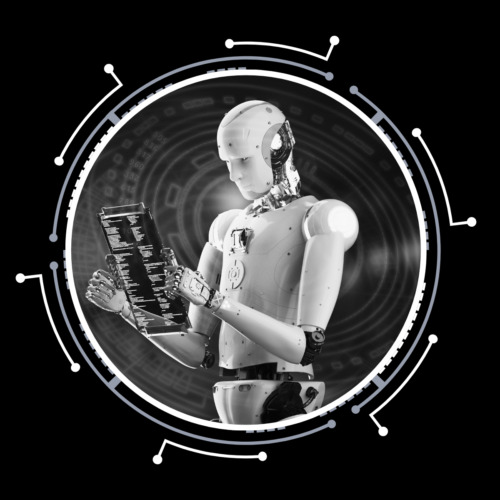In a world where AI and ML are modernizing human-computer interactions and minimizing human effort, data annotation is essential to their success. Data annotation ensures these projects are managed accurately, enhancing the performance of AI and ML systems. But how does it work? This article will delve into data annotation, its various types, and its benefits. Read on to learn more.
What is Data Annotation?
Data annotation is basically about tagging and labeling information to help machine learning algorithms make sense of it. Think of it as teaching AI models how to understand and categorize different types of data like text, audio, videos, and photos.
For supervised learning, data annotation is crucial. The more labeled data a model gets, the quicker it learns to work on its own. With well-annotated data, AI can be used in various applications like automating tasks, recognizing speech, or powering chatbots, which leads to more reliable results and better performance.
Importance Of Data Annotation In Machine Learning
In machine learning, the data is used to help computer systems learn to perform better, similar to how people learn from experiences. In this process, data annotation, also known as labeling, is essential because it teaches algorithms that help in identifying patterns and generating precise predictions.
At the same time, neural networks in machine learning are made up of layers of digital neurons. Throughout the process of information processing, these networks resemble the human brain. For supervised learning, a popular machine learning technique is used in which computers pick up knowledge from labeled instances, making labeled data essential.
Machine learning models, moreover, can efficiently read and sort incoming data when they are trained and tested on datasets that contain labeled data. With little assistance from humans, algorithms can learn on their own and prioritize outcomes with the support of our high-quality annotated data. The potential of data annotation to improve model performance and accuracy makes it crucial to AI.
Types of Data Annotation
We have further divided types of data annotation to help you comprehend. Let’s examine each of them separately.
Image Annotation
They can quickly and accurately distinguish between your eyes and ears, and more precisely between your eyebrows and eyelashes—everything based on the datasets they are trained with. Have you ever noticed how your camera filter fits flawlessly on your face, regardless of different shapes?
Did you understand the importance of picture annotation in modules now? Well, it includes robotic vision, computer vision, facial recognition, and other related topics too. Furthermore, to train these models, AI specialists provide their photographs with features such as captions, IDs, and keywords. Following this, the algorithms recognize, comprehend, and learn on their own using these parameters.
Audio Annotation
Compared to visual data, audio data is considerably more dynamic. An audio file can be related to various elements, such as language, speaker demographics, dialects, mood, intent, emotion, and behavior, among others. Timestamping data, audio tagging, and other approaches should be used to identify and tag all of these aspects in order for algorithms to analyze data efficiently. In addition to spoken cues, nonverbal examples such as breathing, quiet, and even background noise can be annotated to allow systems to comprehend them completely.
Video Annotation
A video is a collection of photos that together provide the impression that objects are moving, whereas an image is still. Each picture in this collection is now referred to as a frame. In order to annotate various objects in the field in each frame of a video, key points, polygons, or bounding boxes are added during the annotation process.
The AI models in action may learn movement, behavior, patterns, and more when these frames are stitched together. Concepts like object tracking, motion blur, and localization could only be applied to systems through video annotation. You can annotate frames using a variety of video data annotation applications. AI models can pick up movement, behavior, patterns, and other characteristics by piecing together these annotated frames.
Text Annotation
Text-based data is now the main source of unique insight and information for the majority of enterprises. These days, text can be anything from a social media remark to user reviews on an app. Additionally, writing has a great deal of semantic richness, in contrast to images and movies, which typically convey intents that are straightforward.
Humans are predisposed to comprehend statements in their context, to grasp the meaning of each word, sentence, and phrase in isolation, to connect them to a particular dialogue or circumstance, and ultimately to recognize the statement’s overall meaning. On the other hand, machines are unable to achieve this at exact levels. They don’t understand abstract concepts such as humor, sarcasm, or other components, which makes text data classification more challenging.
Trupp Global offers the above text labeling services for a variety of use cases to support your AI development.
Improved Accuracy of ML Models
Data annotation enables the precise labeling of data, which enables ML models to be more accurate.
Comprehensive Data Understanding
Annotating data helps in easily understanding the context and meaning of the data, making it seamless to identify patterns and trends.
Increased Efficiency
Data annotation assists in automating several processes, including image or video recognition, which makes it time efficient.
User Experience
Annotated data can be used to enhance the user experience by offering relevant search results and personalized recommendations.
Better Decision-Making
Annotated data helps with more informed decisions, which includes identifying potential fraud or detecting customer behavior patterns.
Data annotation in AI/ML: Outsourced or In-house?
Compared with in-house data annotation, data annotation outsourcing services are proven to be better both commercially and technically. Majorly, because of the cost savings associated with outsourcing. You heard it right.
Several sources may claim that data annotation outsourcing may be a costly affair, but it’s the opposite. In fact, certain reports have even proven that in-house data annotation is four times costlier than outsourcing, considering the expertise, infrastructure, employment costs, etc.
Moreover, outsourcing refers to a professional commitment that involves a higher degree of professional expertise, experience, and consultancy. The experts in the domain follow international data security and regulatory frameworks for privacy security.
In all and every way, outsourcing is more favorable than in-house data annotation.
CONCLUSION
Found this useful?






